The Federal Reserve as an Instrument of War
Last Updated on July 1, 2019 by Hamad Subani
ABSTRACT: While much has been written about how the Federal Reserve benefits certain private parties and how it generates money out of thin air, this paper delves deeper into the operation of the Federal Reserve as an instrument of war, and its historical role as a primary enabler of armed international conflict. A comparison is done with an analogous monetary institution, the Bank of Canada, to show that the Federal Reserve is being operated differently, with war being its chief historical focus.

The above image is licensed under a Creative Commons License. Feel free to use it. You can get a high quality image for printing here.
This paper resulted from attempts to derive the logic of mechanisms that govern money supply, with focus on the United States. I will also assess whether or not instruments of money supply have stayed true to the logic behind their existence. And if not, I will try to derive the rationale behind their present operation.
An Introduction to Juris Naturalis, an organic view of economics
My perspective may be categorised as that of the Austrian School of Economics, Objectivist and Libertarian. But I would like to emphasize the role of Richard Maybury’s naturalist philosophical viewpoints in shaping my perspective. Maybury attempts to derive human laws from Judeo-Christian moral beliefs. While this is a broad subject, Maybury has distilled the essence of these moral beliefs into two laws[1] that are very relevant to inter-human relations:
1. Do all you have agreed to do.
2. Do not encroach on other persons or their property.
Maybury regards these laws with the same certainty as scientific principles, a concept he refers to as juris naturalis. Maybury demonstrates that adherence to or deviation from these laws results in predictable economic outcomes.[2]
These laws are more relevant to understanding money supply than economics, mainly on the basis of what came first. Maybury demonstrates that these laws were taken for granted by the founding fathers of America, when they were drafting laws that lead to the creation of the largest “free market.” On the other hand, modern day economics is a relatively new discipline that attempts to identify patterns using a rigid but limited framework. To quote Alfred Marshall in The Principles of Economics:
The forces to be dealt with are…so numerous, that it is best to take a few at a time…Thus we begin by isolating the primary relations of supply and demand.[3]
Why Establishment Economics Fails
When Alfred Marshall published his conclusions in 1890, supply and demand diagrams appeared only in a footnote,[4] despite his being an outstanding mathematician. Modern day economics has taken this approach to the extreme, and instead of factoring in complexity, it is geared towards providing predictable outcomes on the basis of a narrow set of variables. These predictions in turn, are elevated to an exact science in understanding economic activity. Since economics has been reduced to a largely technical subject, many economists unknowingly use their tools to validate ideas that have been set by larger interests. For example, a major employer of economists in the United States today is the Federal Reserve. Nearly 74 per cent of articles on monetary policy published by American economists in American journals appear in journals of the Federal Reserve or are authored/co-authored by their staff economists.[5] They are keen in establishing their viewpoints in the area of money supply specifically,[6] portraying the Federal Reserve System as a “social welfare optimizer.”[7]
Understanding money supply from the perspective of juris naturalis may appear too simplistic, considering the complicated jargon economists currently use. But the interpretation remains as powerful and pristine as a natural law. Money is solely meant to be a medium of exchange, as bartering needs and goods is complicated. Although people have tried using various objects as units of money, only units of gold and silver have proven to be effective.
Why Politicians will always hate Gold
The problem with using units of gold and silver arose when people started violating the two laws. For example, counterfeiters introduced coins minted from other metals and polished with gold or silver. But such crimes were still not potent enough to damage the overall money supply. The money supply was damaged when institutions and/or organizations entrusted with minting the coins violated the two laws. For example, when Roman politicians discovered that raising taxes to finance their wars resulted in public discontent, they resorted to counterfeiting. Any silver coin that made its way back into the Roman Treasury had its edges shaved off, and these shavings were used to mint new coins,[8] which the Roman government would use at its own discretion. When people noticed this, they started reeding the edges of the coins. A coin missing the reeding could thus be differentiated as “clipped.”[9] Undeterred, Roman politicians resorted to debasing the currency, increasing the proportion of copper in the coins. In 54 A.D. a denarius was 94 per cent silver. Almost 200 years later, the silver content had been reduced to 1 per cent.[10] The quantity of denarii increased, but their value plummeted, resulting in inflation. We thus see inflation as a natural by-product of violating the two laws. On the other hand, modern day economists see inflation as inherent but manageable, such that it can be tamed into delaying its cataclysmic effects.

Nevertheless, politicians were still tempted to break the two laws and the invention of the printing press gave them the opportunity to issue legal tenders or fiat money. The use of legal tenders has been traced to Kublai Khan,[11] a tyrant who ruled Central Asia in 1270 A.D. Kublai Khan wanted money to finance his wars but did not want to create unrest by raising taxes. So he invented paper money. If he needed to pay in gold, he would simply write the amount in gold on paper and sign his name on it. Anyone who refused to accept the money was punished. When George Washington wanted to finance his war, he introduced the Continental dollar as legal tender. This currency was destroyed by inflation, and to avoid the deleterious effects of such forms of money in the future, a statement was added to the American constitution when America became independent. To quote Article One, Section Ten of the U.S. Constitution,
No State shall enter into any Treaty, Alliance or Confederation; grant Letters of Marque and Reprisal; coin Money; emit Bills of Credit; make any Thing but gold and silver Coin a Tender in Payments of Debts; Pass any Bill of Attainder, ex posto facto Law, or Law impairing the Obligation of Contracts, or grant any Title of Nobility.[12]
But even such measures did not stop further use of legal tenders. During the American Civil War, politicians on both sides broke the two laws once again by issuing legal tenders to finance their war machines. Both these forms of money, the Confederate Dollar and the Greenback Dollar were destroyed by inflation.[13]
Banks were supposed to be Warehouses of Gold, not Houses of Cards
Going by Maybury’s narrative, people invented money warehouses, which became banks. A person could deposit his gold or silver coins in a bank for safekeeping. He would then be issued an IOU by the bank for the amount of gold or silver coins. He could redeem the IOU for gold or silver coins from the bank whenever he wanted. And thus, the IOUs became banknotes. The most popular banknotes in circulation were aptly called silver certificates. Unlike today’s Federal Reserve notes, they had no legal tender statement. The statement on them read as:
This certifies that there has been Deposited in the Treasury of the United States of America One Silver Dollar Payable to the Bearer on Demand.[14]



World Wars, Depression and the Crash of 1929
Most people used dollars without ever converting them to gold or silver. But even guaranteed convertibility did not stop politicians from trying to violate the two laws once again. This time, they had an instrument known as the Federal Reserve at their disposal, which I will discuss later. They needed to print more dollars in order to finance American intervention in World War I. To quote Maybury, these newly created dollars caused the “Roaring Twenties” to roar and caused stock prices to skyrocket when people invested these new dollars into the stock market.[15] The inflation that followed set the stage for the Great Depression, which was heralded by the stock market crash of 1929. In this scenario, it was only guaranteed convertibility that prevented politicians from further devaluing the dollar. Depositors started switching their dollar assets to gold, and politicians were forced to reduce the printing of dollars.
This did not fare well with politicians, who wanted to further increase the supply of dollars to finance American intervention in World War II. President Franklin Roosevelt had Congress recall all gold certificates, and the printing of silver certificates was increased to substitute. America was quietly and unofficially put on a silver standard. Silver is not as expensive as gold, giving politicians more leeway to inflate its value.
Bretton Woods and the New World Order
At the end of the war, The Powers That Be across the globe realized how guaranteed convertibility could jeopardize financing of future wars, and decided to further distance themselves from guaranteed convertibility through the Bretton-Woods agreement of 1944. Under this system, signatory countries fixed their exchange rates relative to the American dollar. And America promised to fix the price of gold at $35 per ounce.[16] Instead of maintaining proportional gold reserves, a fractional gold standard was introduced, that allowed politicians to increase money supply under the assumption that most of the money created would never be exchanged for gold.
Rather than being an impartial economic recovery plan, the Bretton-Woods agreement was designed to weaken the currencies of non-American signatories by making them dependent on the American dollar instead of their local gold reserves. Every upturn or downturn faced by the American economy would be mirrored in the economies of these countries. For example, when America went off the gold standard, all the signatory countries, including Canada, went off the gold standard as well.
The Bretton-Woods agreement was also designed to finance a bipolar postwar world, using inflated American dollars. This New World Order was only meant to be dominated by America and the Soviet Union, as the Powers That Be had envisioned in the Yalta conference of 1945. Other potential emerging powers were to be offered huge inducements in exchange for aligning their currency with the American dollar and opening their markets to American economic intervention. In other words, their leaderships were being bribed into putting aside their nations’ pretensions of being independent world powers as they once were. Billions of inflated American dollars were channelled to these countries in the guise of aid for postwar recovery (Marshall plan). Despite the fact that Japan had made a huge initial recovery without such aid, while Turkey, a major recipient of such aid, went from being a respected sovereign power to a corrupt proxy state of NATO. In 1970, nationalist French President Charles De Gaulle decided to trade dollars received through such channels for gold. Realising that this could become a trend that would jeopardise this New World Order, President Nixon made the America dollar inconvertible to gold directly (except on the open market). The American dollar had finally transitioned into a fiat currency.
Why the Federal Reserve System is Unsustainable by Design
At this point, it is moot to ask whether or not the decisions being made by politicians were in accordance with Maybury’s two laws. The United States had moved beyond its humble isolationist origins towards interventionism. And its common law underpinnings were being overhauled to accommodate the demands of this New World Order. Supply of the new American dollar was governed by private banks through a complex mechanism known as the Federal Reserve. The practice of usury, or interest is taken for granted in the Federal Reserve, though Christianity staunchly prohibited it until the reformation. Judaic scripture still prohibits usury. Ironically, many Jewish people have risen to prominence in interest based banking.
A complete understanding of the Federal Reserve System is beyond the scope of this paper. To quote Maybury,
However, modern politicians don’t just run the printing presses. They use a more complex system. They use the banks and Federal Reserve. You don’t need to know how it works, all you need to know is that it does the same thing. It increases the amount of money, and that makes the money worth less. Prices rise.[17]
Maybury is implying that the United States has resorted to practicing the boom-bust cycle of increased money supply, followed by runaway inflation and eventual devaluation of the currency, as characterized in banana republics. But it is being done in a more controlled manner. We too could leave our understanding of the Federal Reserve System at that, but there are two reasons why a more thorough understanding of it is pertinent.
Firstly, the removal of the American dollar from the gold standard and the ascendancy of the Federal Reserve System may be related to the plateauing of the American standard of living (measured as a function of GDP), which had been constantly soaring upwards till the seventies (See Figure I).

Figure I: Richard J. Maybury, Whatever Happened to Justice (Placerville: Bluestocking Press, 1993), 221. Copyright © Bluestocking Press, All Rights Reserved. Reproduced for strictly academic/educational use under the Fair Dealing provision of the Copyright Act of Canada.
Secondly, the American government’s debt soared after 1971. It had taken politicians 194 years to have the American government accumulate its first trillion of debt.[18] After 1971, the American government started accumulating many more trillion in debt, in time spans even as small as two years (See Figure II)! To quote Maybury,
During the 1980s, the federal government’s uncontrolled tax-and-spend policy became an uncontrolled tax-and-borrow-and-spend policy. [….] To pay for its runaway spending, the federal government is now borrowing money at the rate of $1.4 million every two minutes.[19]
Today, the American government borrows at a rate of $4.14 billion per day.[20] It is clear that such practices were never meant to be sustainable. This is confirmed by the fact that the Federal Reserve has discontinued publishing the M3 monetary aggregate,[21] which gives the total amount of American dollars in circulation. Looming economic disaster could thus be kept hidden for a long time. And The Powers That Be are using the debt to pursue military objectives that have little relevance to the American population. Worse, the future devaluation of the American dollar will also hurt the prospects of all other currencies still pegged to it through the Bretton-Woods agreement, including the Canadian dollar.

Figure II: Ed Hall, “US National Debt Clock FAQ,” Brillig.com 4 June 2010 <http://brillig.com/debt_clock/faq.html>
The only thing that seems to keep American dollars from immediate devaluation is a secret 1975 agreement between America and Saudi Arabia. The main purpose of this treaty was to end an OPEC oil embargo, which was started by King Faisal in response to American support for Israeli aggression. While this deal guaranteed American military support for the House of Saud, it also required OPEC countries to sell their oil in US dollars (Petrodollars). This created an unofficial, quasi-oil standard for the American dollar, which has since then saved the American dollar from immediate collapse. But at the present rate at which American currency is being inflated, even the quasi-oil standard of the Petrodollar will fail to catch up!

The Secret History of the Federal Reserve
The Federal Reserve System originally came into being through the Federal Reserve Act of 1913. But it was only after the abolition of the gold standard in 1971 that the American Dollar became subservient to the Federal Reserve. As one may easily notice, the date of its inception coincides with the beginning of America’s boom-bust cycles. The Federal Reserve System was the agency used by the Powers That Be to first inflate American Dollars, even when they had their gold backing, creating the fractional gold standard. The Federal Reserve Act is documented to have originated in a 1910 secret meeting among top American politicians and financiers at Jekyll island. To quote Forbes magazine founder Bertie Charles Forbes,
Picture a party of the nation’s greatest bankers stealing out of New York on a private railroad car under cover of darkness, stealthily hieing hundred of miles South, embarking in a mysterious launch, sneaking onto an island deserted by all but a few servants, living there a full week under such rigid secrecy that the names of not one of them was once mentioned, lest the servants learn the identity and disclose to the world this strangest, most secret episode in the history of American finance. [22]

Among the private bankers who attended, those aligned to the German Rothschild banking family figure prominently. In fact, Rothschild frontman J.P. Morgan is said to have arranged the trip.[23] And once the Federal Reserve Act was enacted, banks aligned to both the Rothschild and Rockefeller families became the most prominent member banks in the Federal Reserve System, on account of their large sizes. If the conspiracy theorists are to be believed, the sinking of the Titanic in 1912 is related to the creation of the Federal Reserve. According to Bill Hughes,[24] some of the older wealthy families of America wanted a bigger share in the Federal Reserve, and threatened to oppose the creation of the Federal Reserve until their wish was granted. So J.P. Morgan had his White Star Lines build the Titanic. All these competing families were invited for the maiden voyage. But J.P. Morgan cancelled his booking at the last minute.[25]
The Federal Reserve: Private, Semi-private, Quasi-private or what?

The Federal Reserve System can be considered a quasi-private arrangement. The Federal Reserve Board consists of public officials. Private banks that opt for membership in the Federal Reserve System grant the Federal Reserve Board limited supervisory powers in exchange for some benefits not available to other banks. These benefits may be considered trivial when we take into account that Member banks become Federal Reserve Banks, and can act as monetary representatives of the United States government. They have a say in the issuing of banknotes and in the measures to control money supply. The quasi-private nature of the Federal Reserve System can be best illustrated by the logo of the Federal Reserve Bank of New York (See Figure III). The logo bears the word “incorporated” which is designated for private entities. While the word “Federal” gives the connotation of government authority.
Most American banks are not members of the Federal Reserve System but the banks that are members constitute the largest banks in America, with more assets than non-member banks. The gold standard restrained the Federal Reserve System from increasing the money supply whimsically. But with the abolition of the gold standard in 1971, the American dollar became completely subservient to the Federal Reserve System.
It is clear that some of the giant banks have considerable say in the determination of American money supply, and all related policy, such as the determination of interest rates. In fact, the Federal Reserve System owes its creation to certain specific New York banks. To quote,
The influence of the New York bankers appears again and again. Earlier they had opposed a central bank in Philadelphia, while later on they had opposed one because they had in effect been able provide the central bank functions they felt beneficial to them. Did the Federal Reserve System give the New York bankers what they had wanted in light of the weaknesses revealed by 1907? New York City bankers were able to maintain a strong influence in the call loan market and hence in the stock market, and with a central bank the call loan market was now relieved of its previous, tenuous role as a source of emergency liquidity. The bankers also got lower reserve requirements and, perhaps most important, they no longer held the responsibility for controlling panics. The role of New York City banks was now to aid the commercial development of the country, that is, to serve as the source of financing business, and the reserve banks were to serve as the provider of emergency liquidity.[26]

The Federal Reserve System functions in a relative absence of transparency. For example, the Federal Open Market Committee, consisting of seven members of the Federal Reserve Board and five representatives of Federal Reserve banks meet several times a year to determine United States monetary policy. These meetings are not open to public. The Federal Reserve System’s quasi-private status allows it be insulated from Freedom of Information requests. It was only in 2009 that Congressman Ron Paul proposed a thorough audit of the Federal Reserve System. To quote Ron Paul’s speech to Congress when introducing his bill (H. R. 1207) to audit the Federal Reserve System,
Throughout its nearly 100-year history, the Federal Reserve has presided over the near-complete destruction of the United States dollar. Since 1913 the dollar has lost over 95% of its purchasing power, aided and abetted by the Federal Reserve’s loose monetary policy. [….] The Federal Reserve can enter into agreements with foreign central banks and foreign governments, and the GAO is prohibited from auditing or even seeing these agreements. Why should a government-established agency, whose police force has federal law enforcement powers, and whose notes have legal tender status in this country, be allowed to enter into agreements with foreign powers and foreign banking institutions with no oversight? […] If the State Department were able to do this, it would be characterized as a rogue agency and brought to heel, and if a private individual did this he might face prosecution under the Logan Act, yet the Fed avoids both fates.[27]
Despite the bill acquiring a cult following among many Americans, many politicians came forward to hijack the bill, proposing modified versions instead, which allowed the Federal Reserve System to maintain its veil of secrecy. As of this date, the bill faces an uncertain future.
How the Federal Reserve “Pretends” to Work
The basic explanation on how the Federal Reserve System allows its member banks to profiteer runs like this. Suppose the government desperately needs $1 billion. In the absence of the Federal Reserve System, it would raise taxes, or use up accumulated taxes. But with the Federal Reserve System, it asks the member banks for a loan. The member banks grant the loan, and the Federal Reserve prints the $1 billion and issues it to the government at interest. How the banks “grant” the loan is hazy. They certainly do not transfer cash from their own private holdings to the Federal Reserve. To add another layer of abstraction, these processes are “computerized.” To pay back the loan plus interest to the banks, the government taxes the American people (income taxes constituted 43% of Federal receipts in 2009). It is important to note that when the government pays back the loan plus interest to the banks, the banks receive actual cash transfers from the government. If the loan is too big to pay (as is always the case), the government merely pays the interest on it (which accounted to 5% of Federal expenditure in 2009), and the banks become holders of American debt. Holding American debt has asset value, as it guarantees a steady trickle of interest by none other than the United States government. And therefore, it can be inferred that the banks in question are not that keen about repayment of the principle.
The government could accomplish the same results by having the Treasury print the money whenever needed, resulting in similar levels of inflation. But by inviting the banks to the table, the Powers That Be have managed to divert Federal expenditure towards paying “interest” for the banks’ “loans.” And in this process, these private banks have become the holders of American debt. More than half of American debt is held by foreign interests. When we try to understand how the banks “grant” the loan to the government in the first place, we are reminded of Class Action Suit filed by John Dempsey against major Canadian financial institutions at the Supreme Court of British Columbia on 15th April 2005. The lawsuit was dismissed as frivolous. But Dempsey’s objections to how banks “granted” loans to the Bank of Canada are still pertinent. To quote,
42. At all material times, these defendant banks and all of them have no legal standing to lend any money to borrowers, because:
1) these banks and credit unions did not have the money to lend, and therefore they did not have any capacity to enter into a binding contract;
2) the defendants did not have any cash reserve, they are not legally permitted to lend their depositor’s or member’s money without expressed written authorization from the depositors, and:
3) the defendants have no tangible assets of their own to lend and all their “assets” are “paper assets” which are mainly in the form of “receivables” created by them out of “thin air,” derived out of loans whereas the monies loaned out were also created out of thin air.
43. Other than bookkeeping and computer entries, no money or substance of any value was loaned by the defendants to the Plaintiff. In all of the loan transactions entered into between the Plaintiff and the Defendants, the financial institutions did not bring any equity to any of the transaction.[28]
A Comparison with the Canadian “Federal Reserve”
A system identical to the Federal Reserve System was created in Canada in 1935 with the establishment of a central bank known as the Bank of Canada. As in the case of the Federal Reserve System, which came into being to finance American intervention in World War I, the Bank of Canada was created as an instrument financing large-scale Canadian involvement in World War II, and later, the Korean war, by inflating Canadian dollars (See Figure V).

Figure V
When Canada became a signatory to the Bretton Woods agreement, the Canadian dollar was pegged to the American dollar. And when the American dollar was taken off the gold standard, the Canadian dollar still continued to be pegged to the value of the American dollar. The supply of Canadian dollars is governed by the main clients of the Bank of Canada, such as Royal bank, the Bank of Montreal, CIBC and the government of Canada.[29] But unlike the United States, these entities have not facilitated the creation of a gargantuan Federal debt, as in the case of the United States. They have even managed to shrink the Canadian Federal debt, creating a surplus instead of the expected deficit!
If we are to assume that systems such as the Federal Reserve and the Bank of Canada are created to assist private member banks in profiteering, how is it that both these almost analogous systems have produced completely different results in two neighbouring countries? To arrive at an understanding, we must assume that the Powers That Be created these systems for larger objectives than immediate monetary profit.
Beyond Profit: How the Federal Reserve is being used to facilitate Global Conflict
The Federal Reserve has helped underwrite continued American military expenditures, even after the World Wars. As of 2009, “Defence” accounts for 23% of all American Federal spending. And therefore, the gargantuan size of the American Federal debt is related to the continuation of American military interventions abroad. In contrast, Canada only piled up a huge Federal debt only when the Powers That Be decided to use its resources in World War II.
If we assume that such systems are primarily instruments of war, can we also infer that the World Wars could have been prevented in their absence. Most of us naively assume that the Federal Reserve only underwrote the American war effort. This is not the case. In World War II, the Lend-Lease program was used to ship supplies worth $759 billion in 2008[30] to other countries involved in the war. Some of these countries, such as Soviet Union and China, cannot be considered friendlies. Even more bewildering is the fact that the inflated dollars churned out by the Federal Reserve managed to find their way into Nazi Germany, through American private “investments.” Once we discard the myth that Germany recovered after World War I like a punching doll, it appears that the rearmament of Germany was largely the effort of American “investors” investing the new American dollars produced by the Federal Reserve. One such interesting case is that of the German chemical conglomerate, I.G. Farben, which was central to the rearmament of Germany. It had on its board of directors Paul Warburg, who also sat on the board of the Federal Reserve Bank of New York.[31] Warburg is considered to be the mastermind behind the creation of the Federal Reserve System. Other board members of I.G. Farben also sat on the boards of Ford Motor Company and the Rockefeller owned Standard Oil. Suspiciously, the main I.G. Farben complex in Germany managed to avoid Allied bombing during the war.
War is a profitable enterprise. But the destruction of economies also hampers profits for banks and major commercial entities. An investigation into the motives of The Powers That Be with respect to the World Wars is beyond the scope of this paper. And this aspect cannot be fairly understood while fixating on monetary profit. But if we give credence to fringe historians, we can arrive at some basic conclusions. It could be that monopoly capitalists in the United States, such as J. P. Morgan (who is believed to represent the moustachioed Mr. Monopoly in the Monopoly board game) realised the limitations they faced in the Western world. And so, they decided to expand outside the Western world, creating societies free of the limitations they faced in the

West. In both the World Wars, only the Soviet Union made notable territorial acquisitions. While offering a panacea to capitalism, the Soviet system created an unprecedented concentration of power, creating a form of monopoly state capitalism, which was highly favoured by The Powers That Be. The Soviet Union may have thus been a modern day colony of “capitalists” based in places like New York and Calgary. There is suggestive evidence pointing towards the same. Notable capitalists took trips to the Soviet Union as if it were a country club. Since the Soviet Union did not allow private investment, these visitors may have had a direct stake in the Soviet Empire. While the United States spared no effort in creating a military industrial complex to counter the Soviet Union, actual operations against the Soviet Union were half-hearted. For example, the Vietnam War forced many Vietnamese people to ally with the Soviets. There is the case of Australian journalist Roland Perry, who wrote a book[32] suggesting that the late Victor Rothschild (the head of the British arm of the Rothschild banking dynasty) might have been the “fifth man” in the infamous Cambridge Soviet spy ring. In 1983, Congressman Lawrence Patton Macdonald took a flight to South Korea to warn South Koreans that American policy towards that nation was designed to placate the Soviets. The plane literally disappeared, very likely diverted to the Soviet Union. Then there is the case of General Zia of Pakistan, who had supervised the “jihad” against the Soviets in Afghanistan. General Zia was killed in a suspicious plane crash. Despite the death of an American diplomat who was also on board the plane, the FBI showed little interest in investigating the case.
The Powers That Be have repeatedly hinted that the American nation is more of a means to an end (manifest destiny?), and that the sustainability of the American economy and the middle class is not their priority. If the American dollar is not meant to be sustainable by design, what form of money is then sustainable? A growing number of Americans are stockpiling gold (as they are stockpiling bullets). Gold still retains its instinctive appeal. According to Carlton Brown, a commodities trader on Wall Street, when 9-11 happened, all traders on the floor instinctively became fixated on the price of gold.[33] As for the gold that was used to leverage the dollar prior to 1971, even Congressman Ron Paul has no idea of what became of it.[34]
Further Reading/Viewing
[1] Richard J. Maybury, Whatever Happened to Justice (Placerville: Bluestocking Press, 1993), 36.
[3] Michael Parkin and Robin Bade, Microeconomics: Canada in the Global Environment 5th ed. (Toronto: Pearson Education Canada Inc., 2003), 148.
[5] Lawrence H. White, “The Federal Reserve System’s Influence on Research in Monetary Economics,” Econ Journal Watch 2.2 (2005): 325. 3 June 2010 <http://www.econjournalwatch.org/pdf/WhiteInvestigatingAugust2005.pdf>
[8] Richard J. Maybury, Whatever Happened Penny Candy (Placerville: Bluestocking Press, 1993), 21.
[16] Wikipedia contributors. “Gold standard.” Wikipedia, The Free Encyclopedia Wikipedia, The Free Encyclopedia, 20 May. 2010. Web. 27 May. 2010.
[20] Ed Hall, “US National Debt Clock,” Brillig.com 4 June 2010 <http://www.brillig.com/debt_clock/>
[21] Federal Reserve Statistical Release, “Discontinuance of M3,” 10 November 2005 rev. 9 March 2006 Board of Governors of the Federal Reserve System 3 June 2010 < http://www.federalreserve.gov/Releases/h6/discm3.htm>
[22] Cushing T. Daniel, Real Money Versus False Money – Bank Credits (Amsterdam: Fredonia Books, 2004), 169-170.
[23] Robert West, Banking Reform and the Federal Reserve, 1863-1923 (Ithaca: Cornell University Press, 1977), 71.
[24] Bill Hughes, The Secret Terrorists (Eustis: Truth Triumphant Ministeries, 2002)
[25] Ron Chernow, The House of Morgan: An American Banking Dynasty and the Rise of Modern Finance (New York: Grove Press, 2001), 146.
[26] Jon R. Moen & Ellis W. Tallman, “New York and the politics of central banks, 1781 to the Federal Reserve Act,”Working Paper 2006-23, Federal Reserve Bank of Atlanta 3 June 2010
<http://www.frbatlanta.org/filelegacydocs/wp0342.pdf> 37.
[27] Ron Paul, “Audit the Federal Reserve,” 26 February 2009 RonPaul.com 3 June 2010
<http://www.ronpaul.com/legislation/audit-the-federal-reserve-hr-1207/>
[28]Dempsey et all v Envision Credit Union et all, 2005 BCSC S91786, 6-7.
[30] Wikipedia contributors. “Lend-Lease.” Wikipedia, The Free Encyclopedia Wikipedia, The Free Encyclopedia, 5 Jun. 2010. Web. 5 Jun. 2010.
[31] Antony C. Sutton, Wall Street and the Rise of Hitler (Sudbury: Bloomfield Books, 1976), 35.
[32] Roland Perry, The Fifth Man (London: Pan Books, 1994).
[33] The Corporation, writ Mark Achbar, Harold Crooks, Joel Bakan, dir Jennifer Abbot, Mark Achbar, Zeitgeist Films, 5 April 2005.
[34] America: Freedom to Fascism, dir Aaron Russo, Cinema Libre, 12 December 2006.

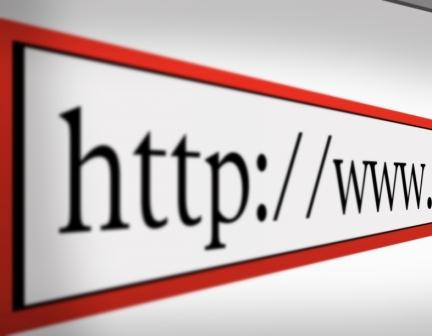
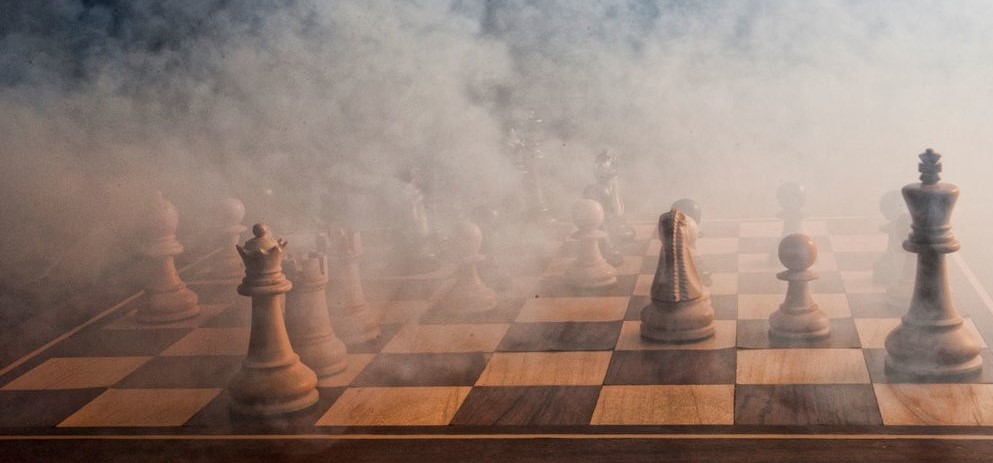


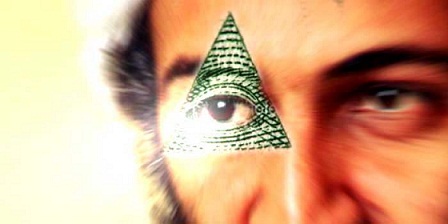

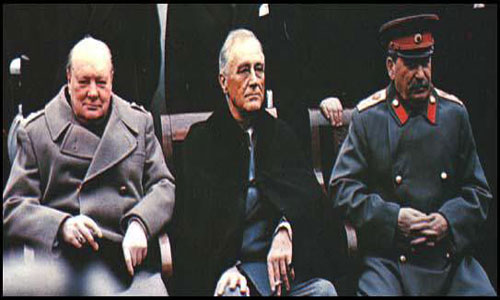

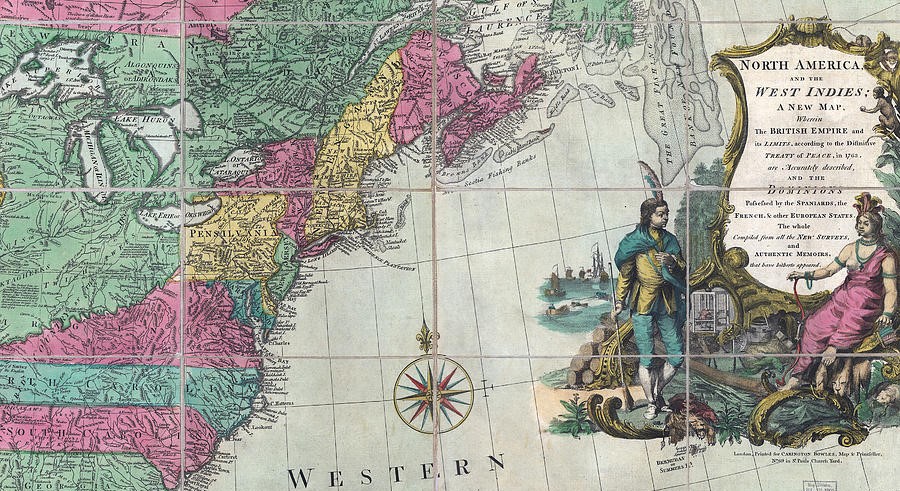
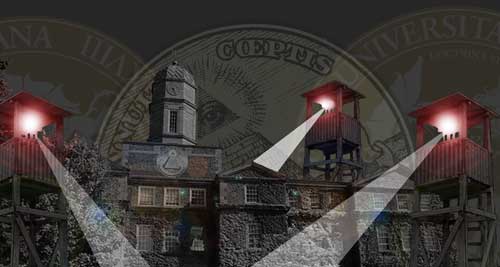
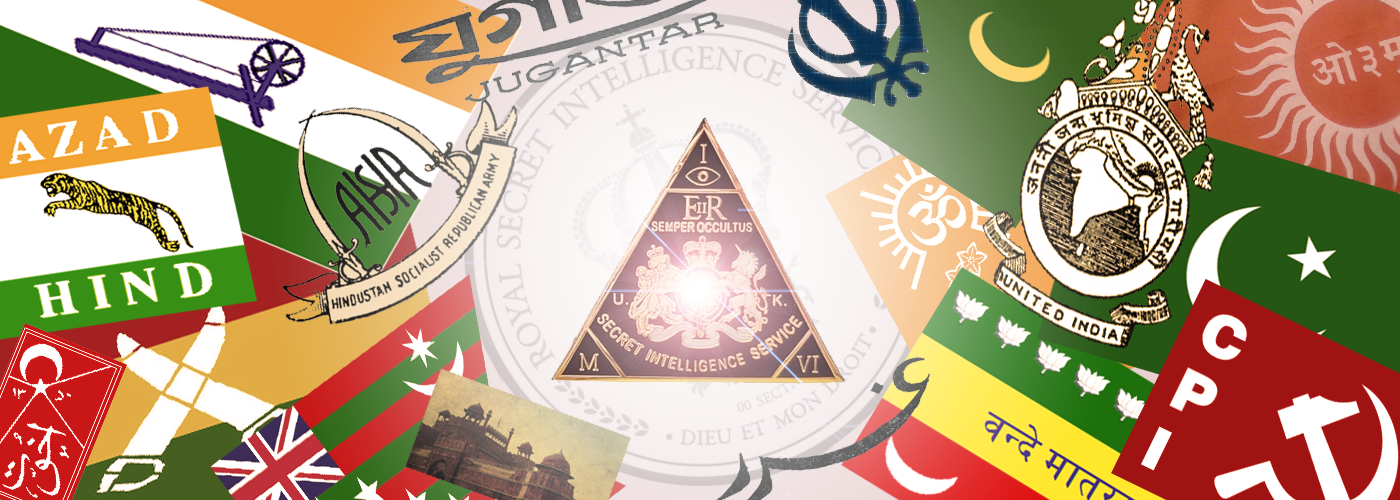


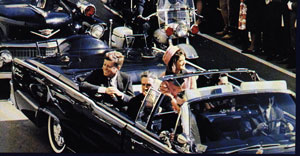

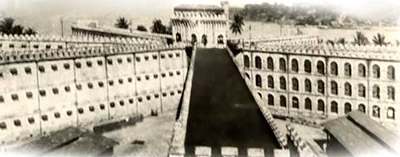

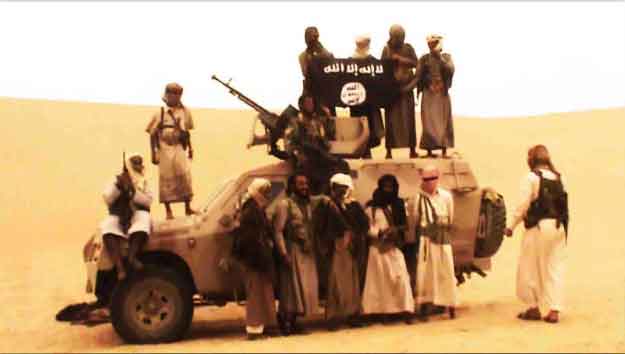
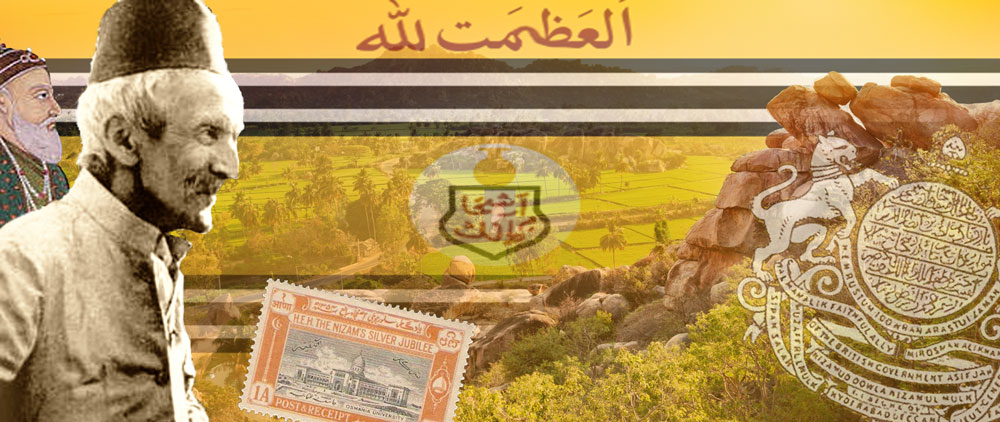






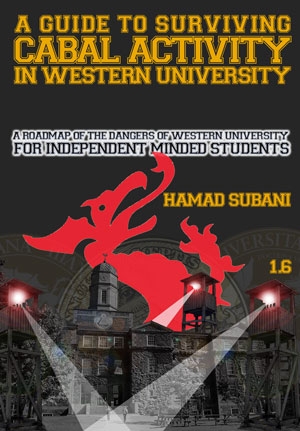
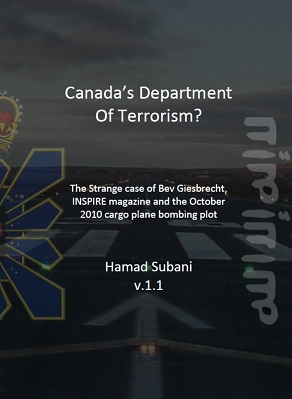

Unionized government employees own 20% of the shares of the 2,900 Federal reserve member banks
Bloomberg: Is Inflation the Legacy of the Federal Reserve?
http://youtu.be/cikT5DdvGj4
Canadian constitutional lawyer, Rocco Galati, on behalf of Canadians William Krehm, and Ann Emmett, and COMER (Committee for Monetary and Economic Reform) on December 12th, 2011 filed an action in Federal Court, to restore the use of the Bank of Canada to its original purpose, by exercising its public statutory duty and responsibility. That purpose includes making interest free loans to municipal/provincial/federal governments for “human capital” expenditures (education, health, other social services) and /or infrastructure expenditures.
http://globalresearch.ca/index.php?context=va&…
Whoops! Looks like the Federal Reserve DID pay attention to this article. Their response:
"The Federal Reserve wants to know what you are saying about it. In fact, the Federal Reserve has announced plans to identify “key bloggers” and to monitor “billions of conversations” about the Fed on Facebook, Twitter, forums and blogs [……..] Obviously, any “positive” feelings about the Fed would not be a problem. What they really want to do is to gather information on everyone that views the Federal Reserve negatively.
http://www.infowars.com/the-federal-reserve-plans…
http://www.infowars.com/don%e2%80%99t-worry-the-f…
Anonymous said on Jan. 14th 8:28 pm —
"All profits earned by the Feds activities go to the US treasury, not the member banks. Get your facts right."
——–
The "profit" returned to the Treasury after expenses in 2006 was $29 billion.
The US paid the Fed over $300 billion in interest in 2006. Private banks paid
even more. This isn't very much profit even with "creative" accounting. The
Fed has never allowed a full external audit; we have to take their word for
the profits they make.
Your fed piece "anatomy of a fraud" is totally wrong. The Feds member banks don't loan a dime of their own assets to the US. They simply turn around and auction T-Bills to investors like China and credit the proceeds to the treasury as a loan that has to be paid back to the those investors. This is how all central banks do it. All profits earned by the Feds activities go to the US treasury, not the member banks. Get your facts right.
Thats exactly what I am saying…..the member banks do not loan a dime of their own assets.
This article was meant to give an overview of the Federal Reserve in terms of what goes in (real taxpayer money) and what comes out (paper loans). It was never meant to explain the innards of the Fed. If what you are implying is correct, then instead of the Fed acting as a private interest, it is acting as an intermediary for private interests such as those whom the T-Bills are auctioned off to. In that case, they would select all the requisites of auctioning T-bills (whom, when where and how much)….which creates a conflict of interest since they are usually too close to the investors who buy the T-bills.
Even if all profit earned by auctioning goes back to the Treasury, they are still facilitating the creation of public debt, and they are also facilitating the takeover of this public debt by private investors, if not them. And if such an arrangement was properly implemented, don't you think that the US could pull itself out of debt because of the accumulated "proceeds" remitted by the Fed?
Just in case there is anyone out there who hasn't seen
"The Money Masters: How International Bankers Gained Control of America," I would highly recommend it.
http://video.google.com/videoplay?docid=-51531956…
In regards to your latest article: The Fed: Anatomy of a Fraud, you should note that the Fed is a private bank owned by the Wall Street Banks such as JBMorgan Chase and Citibank. This is documented in The Secrets of the Federal Reserve, The London Connection by Eustace Mullins. Mullins meticulously traces the original stock ownership to the current Wall Street Banks. Basically the Fed creates money out of thin air and buys our securities with it (Treasury notes). Then we get the money (Federal Reserve note dollars) but then are supposed to pay it back with interest. Pretty good deal for them especially when the Federal Reserve “loans” the Wall Street Banks trillions of dollars to cover their derivatives and pay their bonuses. You can guess who the ‘London Connection’ is I bet.